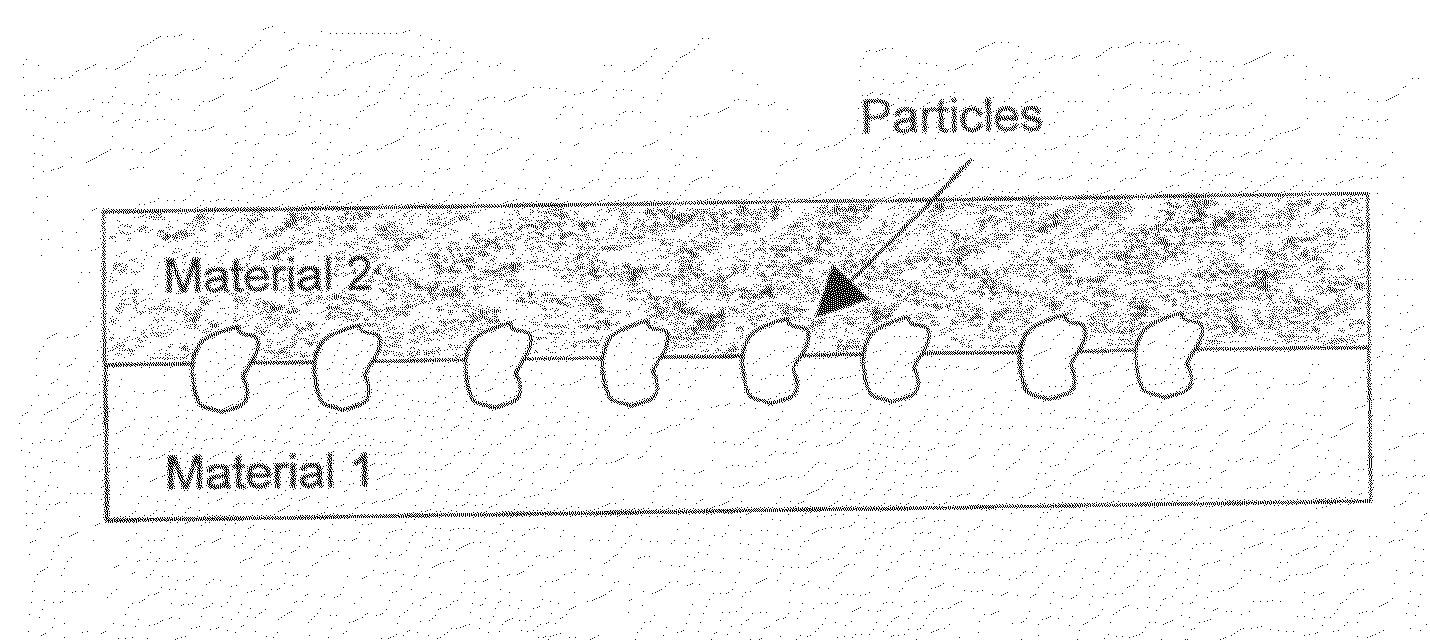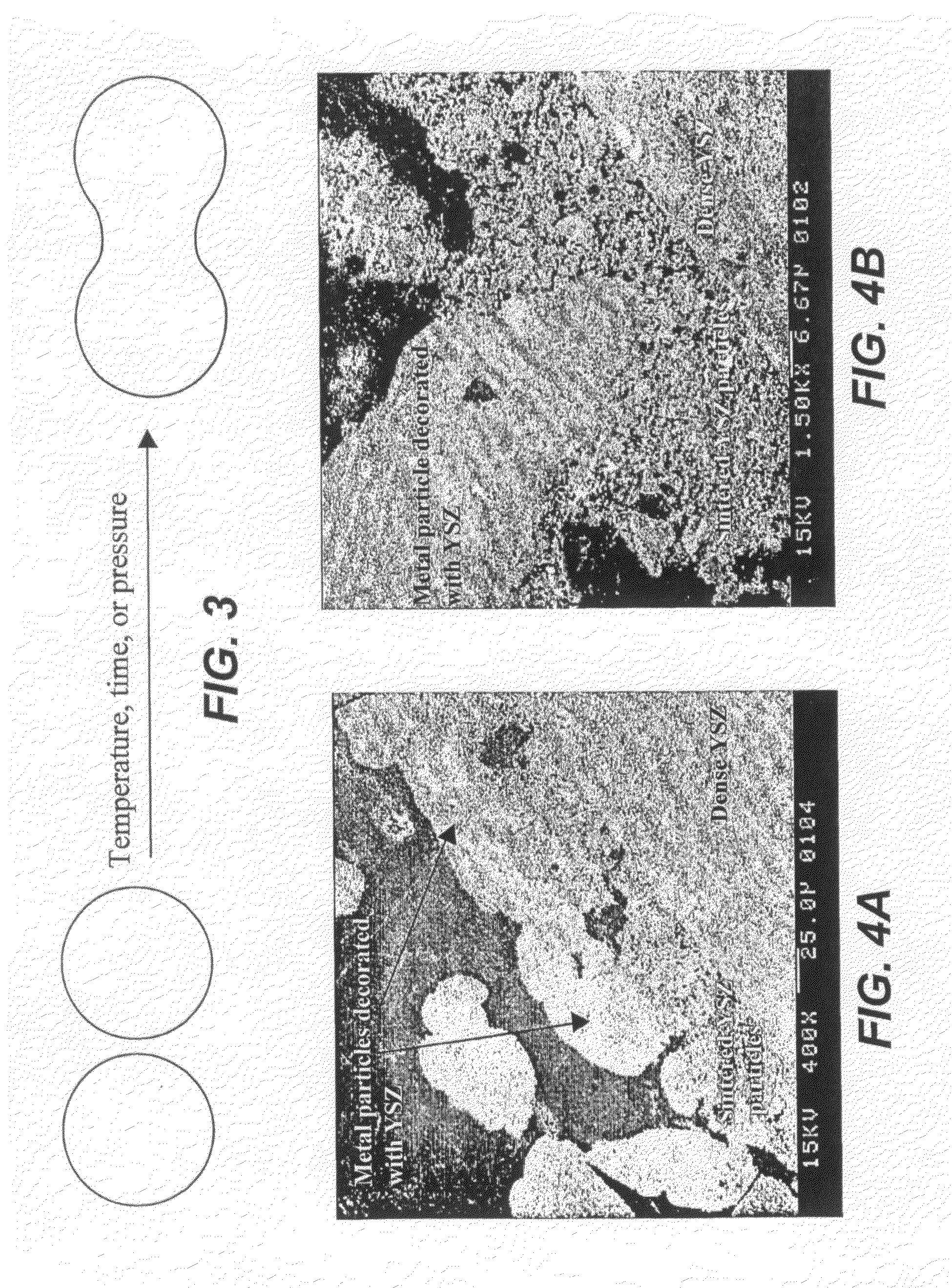Joining Of Dissimilar Materials
a technology of dissimilar materials and joints, applied in the field of dissimilar materials, can solve the problems of limiting the usefulness of joints and all these methods having limitations, and achieve the effect of different ductility
- Summary
- Abstract
- Description
- Claims
- Application Information
AI Technical Summary
Benefits of technology
Problems solved by technology
Method used
Image
Examples
example
[0052]The following example describes and illustrates aspects and features of a specific implementation in accordance with the present invention. It should be understood the following is representative only, and that the invention is not limited by the detail set forth in this example.
[0053]Bonding a Steel Current Collector to a Solid Oxide Fuel Cell Structure
[0054]As noted above, FIG. 2 shows the surface of ferritic 70Fe-30Cr stainless steel articles decorated with yttria-stabilized zirconia (YSZ) particles. YSZ is the standard electrolyte material for solid oxide fuel cells. The two types of particles were mixed together in an attritor mill under isopropyl alcohol (IPA). A binder (hydroxypropylcellulose, HPC) was added to the mixing medium in order to form agglomerates of the YSZ on the surface of the metal particles. The shearing action of the attritor mill forces the YSZ particles into the surface of the metal particles, where they remain embedded after milling. The metal partic...
PUM
| Property | Measurement | Unit |
|---|---|---|
| Fraction | aaaaa | aaaaa |
| Fraction | aaaaa | aaaaa |
| Fraction | aaaaa | aaaaa |
Abstract
Description
Claims
Application Information
 Login to View More
Login to View More - R&D
- Intellectual Property
- Life Sciences
- Materials
- Tech Scout
- Unparalleled Data Quality
- Higher Quality Content
- 60% Fewer Hallucinations
Browse by: Latest US Patents, China's latest patents, Technical Efficacy Thesaurus, Application Domain, Technology Topic, Popular Technical Reports.
© 2025 PatSnap. All rights reserved.Legal|Privacy policy|Modern Slavery Act Transparency Statement|Sitemap|About US| Contact US: help@patsnap.com



